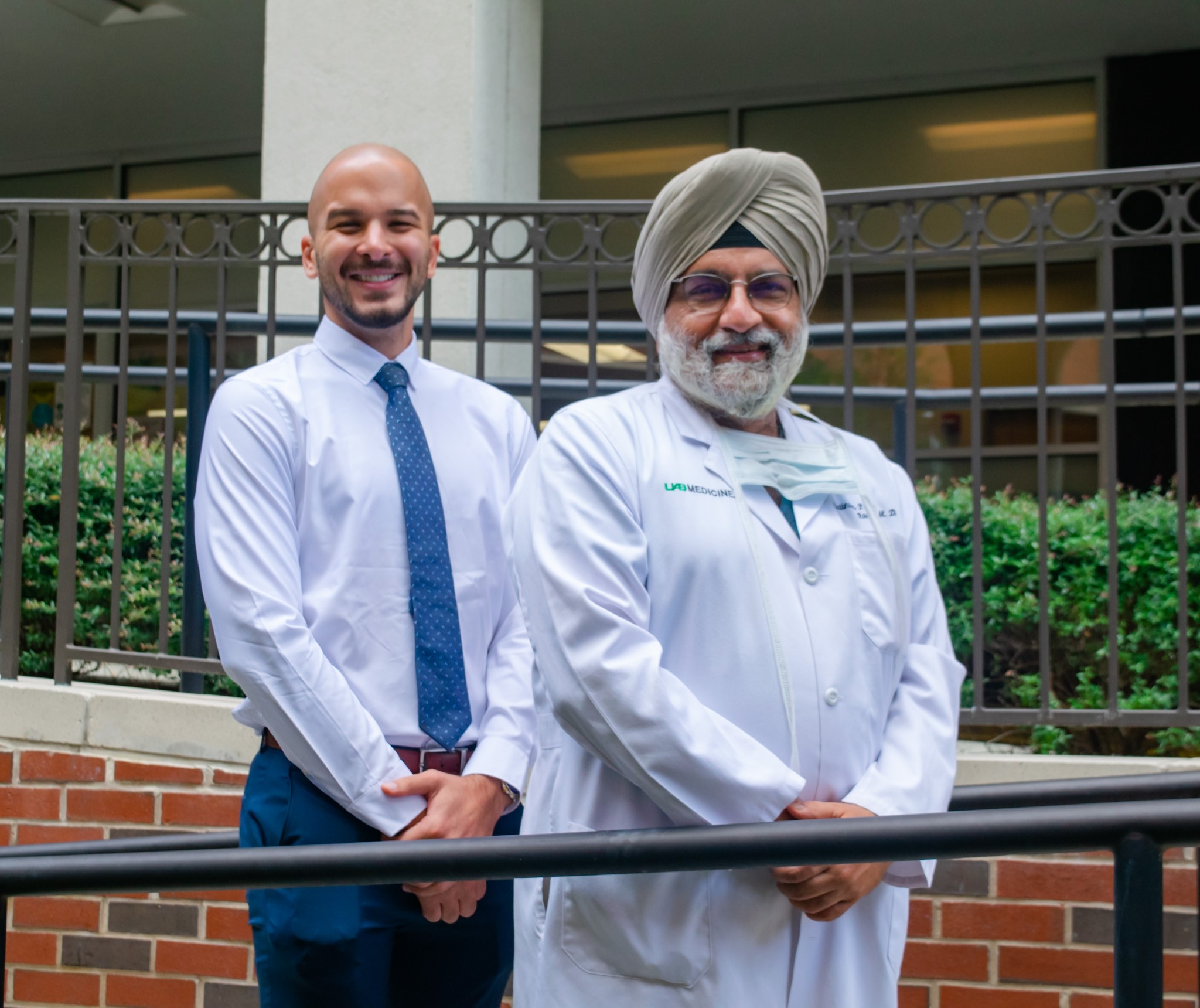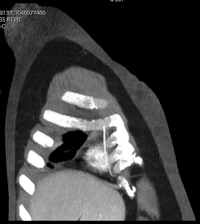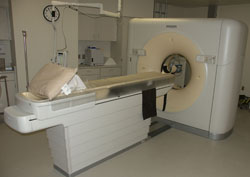 The Combined Cardiothoracic and Body Imaging Fellowship Training Program at the University of Alabama Department of Radiology provides advanced training in state-of-the-art thoracic and abdominal CT, ultrasound, and MRI. Additionally, subspecialty training is provided in cardiac CT and MRI. Specific imaging techniques of CT and MR angiography, including coronary CTA and MRA are incorporated into daily practice. The overall experience creates a strong foundation for entrance into either the field of academic radiology or a private practice career.
The Combined Cardiothoracic and Body Imaging Fellowship Training Program at the University of Alabama Department of Radiology provides advanced training in state-of-the-art thoracic and abdominal CT, ultrasound, and MRI. Additionally, subspecialty training is provided in cardiac CT and MRI. Specific imaging techniques of CT and MR angiography, including coronary CTA and MRA are incorporated into daily practice. The overall experience creates a strong foundation for entrance into either the field of academic radiology or a private practice career.
Specific Program Goals and Objectives:
- To instruct fellows in the prescription, performance, and interpretation of body imaging studies using state of the art equipment and techniques
- To teach challenging image-guided interventional procedures in the chest, abdomen, and pelvis
- To improve fellow efficiency and communication skills
- To develop teaching skills, through didactic intradepartmental conferences as well as interdisciplinary conferences
- To provide opportunity for quality research
The curriculum is divided equally between body and cardiopulmonary imaging with flexibility of tailoring training to specific goals. The fellow spends approximately six months in each section. In abdominal imaging, clinical time is divided between body CT, ultrasound, and MRI.
 Advanced instruction in gastrointestinal fluoroscopy and genitourinary imaging is included at the level desired by the fellow. A large volume of procedures, including routine chest, abdomen, and pelvis biopsies, renal and pancreas transplant biopsies, thrombin pseudoaneurysm repair, thoracentesis, paracentesis, and endovaginal collection drainage are incorporated into fellow training.
Advanced instruction in gastrointestinal fluoroscopy and genitourinary imaging is included at the level desired by the fellow. A large volume of procedures, including routine chest, abdomen, and pelvis biopsies, renal and pancreas transplant biopsies, thrombin pseudoaneurysm repair, thoracentesis, paracentesis, and endovaginal collection drainage are incorporated into fellow training.
UAB has long been a leader in cardiovascular disease, and cardiac imaging. We have an excellent program of adult and pediatric heart disease, including a world class cardiac surgery program, cardiac transplantation, pulmonary hypertension, heart failure, etc. In cardiopulmonary imaging, the fellow will receive training in (a) interpretation of all aspects of thoracic imaging including conventional radiographs of the chest, chest CT, cardiac CT, and MRI; (b) percutaneous biopsy and drainage procedures in the thorax; (c) exposure to CT/PET; (d) cardiopulmonary pathology and brief rotation on clinical services; (e) research activities.
Extensive clinical material is available in both cardiac and pulmonary diseases, including 4000 cardiac catheterizations in adults, 800 pediatric cardiac catheterizations, more than 20,000 chest CT's and 100,000 chest radiographs, and about 600 cardiac MR examinations annually. There is excellent interaction between the Radiology Department, and the Divisions of Adult and Pediatric Cardiology, Pulmonary Medicine and Cardiothoracic Surgery.
Likewise, there is a large volume of patients who are evaluated for abdominal and pelvic pathology, divided between our outpatient and hospital facilities. More than 25,000 body CT's are performed annually. We also perform 70-80 ultrasound studies each day. A variety of image guided needle procedures are performed routinely.
In addition to clinical training, a significant amount of didactic lectures are available to the fellow. Interdisciplinary conferences are held weekly with Urology, Gastroenterology, Pulmonary Medicine, Gynecologic Oncology, Hepatology/Pancreatico-biliary Surgery, and Vascular Surgery. Daily departmental lectures are offered and include Journal Club and non-interpretive topics such as medical legal case conferences.
Career Support:
Each fellow will be closely monitored with direct faculty supervision in both diagnostic and procedural studies. As the fellow demonstrates increasing ability, additional responsibility will be given. The progress of the fellow will be routinely evaluated, and an advisor will meet periodically with the fellow to discuss areas in need of additional training. The advisor will also provide support to the fellow as they begin to consider employment opportunities.
Equipment:
With the opening of a new eight-story in-patient facility, with a completely digital radiology department, equipped with PACS and voice recognition dictation, fellows will have daily access to the newest imaging equipment. The equipment includes ten CT scanners including one CT fluoroscopy, four 40-detector and one 64-detector that is used primarily for cardiac imaging, seven cardiac cath labs, eight MRI scanners, including a 1.5 GE magnet and another 3T Philips magnet dedicated to cardiac imaging with advanced cardiovascular image package, including free breathing navigator technique. The 3T magnet utilizes parallel acceleration technology and includes MR spectroscopy package for emerging applications and research.
The ultrasound section includes two new Philips IU-22 scanners, six Acuson Sequoia, and two ATL 5000 machines. A large amount of vascular imaging is performed including dialysis mapping, peripheral arterial and venous and transplant studies.
Qualifications:
All applicants must be board certified or board eligible in Diagnostic Radiology. Three years of training in an ACGME accredited program is required. The applicants should also be eligible for unrestricted license to practice medicine in the state of Alabama. Please visit Alabama Board of Medical Examiners for licensing requirements.
We welcome your application and look forward to hearing from you. For more information, we encourage you to call, e-mail, or write to us.
Contact Information:
Satinder P. Singh, M.D., F.C.C.P., Program Director
Department of Radiology - JTN 374 -University of Alabama Hospital
619 19th Street South - Birmingham, AL 35249-6830
(Tel) 205.934.5345 | email: cafellow@uabmc.edu
To download the UAB Application